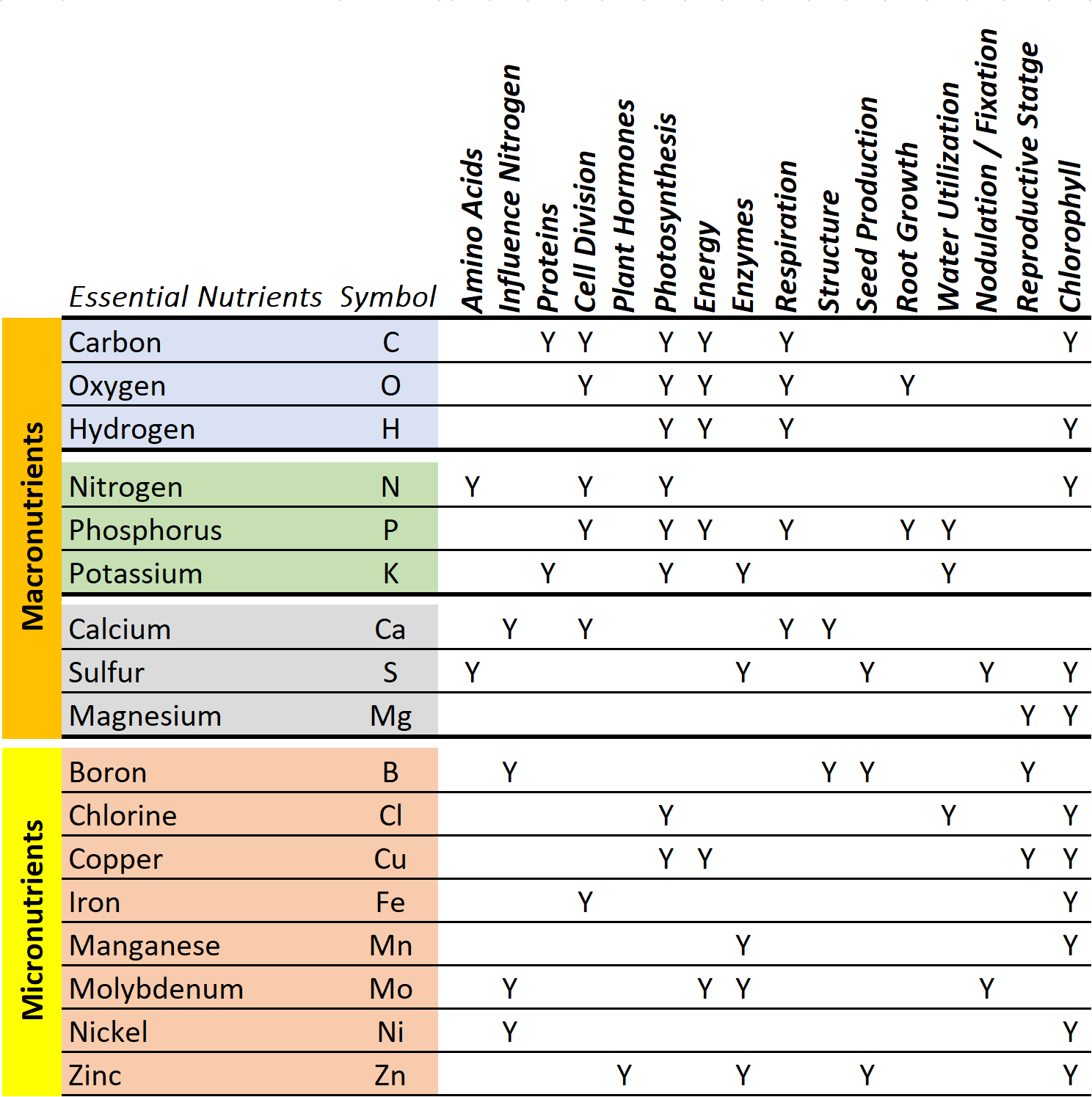Let’s take a trip back in time to 6th grade science – and class, today we’re going to review the Periodic Table of Elements. Comprised of both naturally occurring and man-made elements, this list currently has 118 elements. Seventeen of these are essential nutrients, or elements, for all plant life on earth.
An “essential element” is required by the plant to successfully complete the vegetative and reproductive life cycle and cannot be substituted for any other nutrient or element. These 17 elements all have very specific tasks within a soybean plant to aid in emergence, structure, energy and reproduction – all leading to a harvestable and marketable soybean.
As soybean producers, it’s important to understand these 17 essential elements and how they are absorbed into the plant. For example, oxygen, carbon and hydrogen are obtained by the plant from the air in the form of carbon dioxide and water. The other 14 essential elements come from the roots’ interaction with the soil. These essential elements can be restricted in the plant because of pH imbalance, compaction, lack of soil moisture, low microbial activity or simply a low supply in the soil.
Chart 1: The above chart lists the 17 essential elements for plant life and their influence on various stages of plant growth.
Chart 1 shows how each essential nutrient impacts every stage of plant life. Therefore, it’s important to understand how crops interact with soil nutrients. Below are crop-specific recommendations for identifying the amount of essential nutrients removed from the field and making plans to replace the elements.
1. Silage and Hay:
a. Verify how much of the 14 essential nutrients/elements are being removed.
b. Example: In most fertility situations, DAP and Potash are applied back to the field. However, this only accounts for three of the 14 essential nutrients. What about Ca, S, Mg, B, or Zn?
c. Evaluate how this could impact the future crops.
d. Send vegetative samples to a reputable lab to better understand removal rates.
2. Corn and Soybeans (high yields):
a. Is the amount of nutrients applied equal to or greater than what was removed in grain?
b. In new fields, determine what may be the limiting factors for the upcoming crop.

